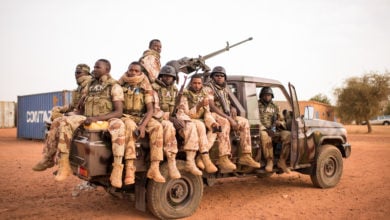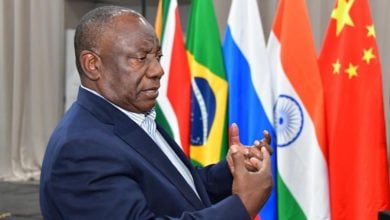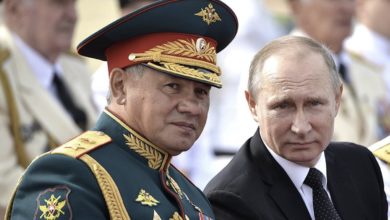(Originally posted in Nov. 2009 and updated slightly.)
Nov. 7 marks the 96th anniversary of the 1917 Russian Revolution. While the revolution itself could be considered a more drawn-out process, Nov. 7 stands as its most outstanding date. When the majority of workers, peasants and soldiers took over state and governmental power, for the first time in the history of class society a country was not controlled and governed by a tiny group of monarchists, capitalists or other exploiting class.
Just six months before, all actors in the political drama had considered it impossible for such a revolution to occur so soon.
Prior to the revolution, the Russian Empire—roughly the same territory later covered by the Soviet Union—was ruled by the czar, or emperor. The czar had absolute power. He ruled both through the Russian Orthodox Church, which created a religious veneer for the regime, and by virtue of his hereditary position as the richest and most central of a group of feudal princes who divided the land amongst themselves.
Small in number, they had tied the vast majority of the country, some four-fifths of the population, to the land like feudal serfs. Although serfdom was formally abolished in 1861, serf-like conditions continued well into the 20th century. Along with the feudal remnants of the 17th century, a section of the nobility wished not only to emulate Europe but also to establish the place of the ruling classes of Russia alongside those of Britain, France and Germany—that is, the most powerful capitalist countries of Europe. That meant Russia also had to develop capitalist industry.
The czar, however, was aware that popular forces led by the capitalist class had overthrown the absolute monarchs in Western Europe. He therefore sought to control the process and preserve the aristocratic class. Capitalism in Russia thus developed in its own peculiar and somewhat “deformed” way. As a proportion of the economy, industry remained relatively small. However, in technique it matched the advanced nations of Western Europe, and indeed foreign, mostly British and French, investors owned most of Russian industry.
The workers were drawn from the peasantry, closely connecting the two laboring classes. Many of Russia’s new capitalists were also landowners and part of the nobility. Illiteracy, poverty, hunger, disease and poor housing ravaged the lives of both the workers and the peasants, in sharp distinction to the great wealth and high living of the czar and aristocracy.
Elements of the new capitalist class in Russia, however, chafed under the czar, as did many of the intelligentsia. Both sectors resented and felt oppressed by the czar’s absolute power. These pressures accompanied the demands of the workers and peasants for more economic and political rights.
War lays basis for revolution
When Russia followed France and England into the First World War, social tensions inside the empire became exacerbated. By 1917, war had wreaked a terrible toll. The brunt of the hundreds of thousands of deaths was borne by the peasants, who were forcibly conscripted. Hunger, disease and poor living conditions ravaged the rank-and-file soldiers just as the rest of the exploited classes.
It was under these pressures that the czar’s regime finally fell. On International Women’s Day, Feb. 23, 1917, on the Gregorian calendar, women textile workers launched a strike in Petrograd, the capital of Russia. Over five days, the textile workers’ strike grew into a general strike, and the army split, with rank-and-file soldiers coming over to the side of the workers.
It took five days for the czar’s government in Petrograd to fall, and some months for the monarchy to be swept away in various parts of the country. Parties representing the capitalists, petty capitalist elements and, purportedly, the peasantry, formed a provisional government.
The reformist socialists—the Mensheviks—and the peasant-based Social Revolutionary Party supported the provisional government. The Mensheviks justified their support for the new bourgeois government by arguing that the revolution would have to pass through a separate “bourgeois” stage where a capitalist republic would be established, with formal democratic rights, as a prerequisite for a socialist revolution. Until their central leader, Vladimir I. Lenin, returned from forced exile in April 1917, the Bolshevik Party, too, gave support to the new regime.
The provisional government, however, was very fragile. The weak Russian capitalist class, totally dependent on Anglo-French imperialism, could not end Russia’s involvement in the war. Prostrate before the Western imperialists, and with little to no independent social base, forces of the provisional government began to move closer to monarchist elements scheming to return to power.
Meanwhile, the workers and peasants had created their own structures of power—soviets. The soviets, or councils, were mass democratic organs based in the factories, districts and military units, as well in some parts of the countryside.
Thus, a type of “dual power” arose. On the one hand, the precarious provisional government was besieged on all sides, unable to end the war or meet the workers’ and peasants’ other social and economic demands. And on the other, the soviets of soldiers, workers and peasants potentially represented the interests of the toiling, exploited masses, who continued to clamor for relief from the jaws of war and poverty.
In April 1917, Bolshevik leader Lenin arrived in Petrograd and grasped the situation immediately. He understood that the nascent Russian capitalist class could not end the war and would not touch the great landed estates or capitalist industry, leaving all the demands of the masses unmet. He argued that instead the soviets of soldiers’, workers’, and peasants’ deputies should take power in their own name.
Rather than depend on the provisional government to provide “Land, Peace, and Bread,” they should gather all the power in the organs of the working masses, demanding and achieving “All Power to the Soviets.” When Lenin first produced his famous April Theses, only a small minority of the party’s Central Committee supported his position. But the force of his arguments and the unfolding of events soon won over the Bolshevik leaders and rapidly growing rank-and-file membership.
On Nov. 7 (Oct. 25 according to the old Russian calendar) the workers, peasants and soldiers rose again, and it was these two slogans that drew them over to the Bolsheviks, giving the revolutionary communists leadership of the soviets. Under that leadership, the workers in alliance with the peasantry deposed the provisional government and assumed total control through the soviets.
This “October Revolution” reverberated all around the world. In China, where Marxism had no history, small circles of revolutionaries began to discuss the ideas of communism. Among them was Mao Tse-tung who urged the Chinese people to “Arise and Imitate” the great popular unity of the October rising. Two years later, in May 1920, Mao and the few other communists formed the Chinese Communist Party, which went on to lead the great Chinese Revolution of 1949.
Over time, when at the peak of its power, U.S. imperialism, along with its imperialist allies, succeeded in dividing the world communist movement and containing the Russian Revolution, leading to the overthrow of the Soviet Union and to other major working-class defeats.
Millions have looked to the Russian Revolution for inspiration, however, because it continues to stand as a shining example of how the majority of society, its exploited and oppressed masses, can under the leadership of a revolutionary party take power in their own hands, mold it in their favor and take a giant leap toward wiping away all vestiges of exploitation.
With capitalism entering an era of deepening crisis, and U.S. imperialism in apparently irreversible decline, the beacon of the October Revolution shines brighter than ever.





